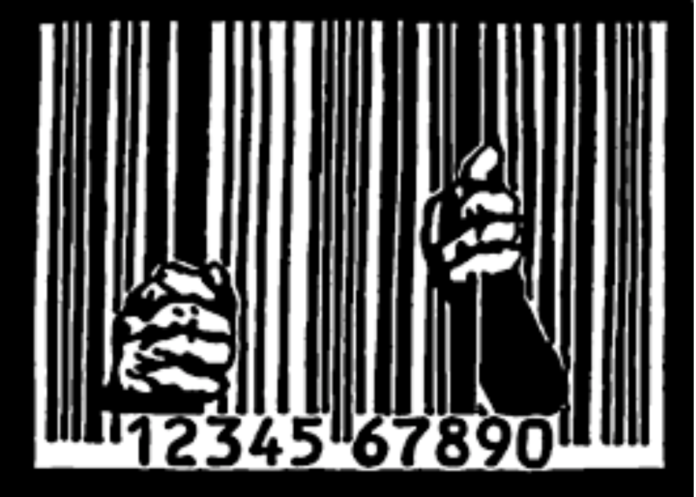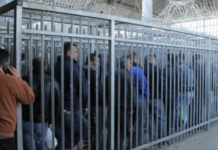Those of you who follow my writings on various topics (how are you both today?) will know that the transformation of women’s prisons in Aotearoa is one of my passions. Women’s imprisonment profile is very different from that of men, their position in the family also different, their backgrounds of abuse terrible, their needs often great, the links between poverty and crime more evident and the influence of drugs even greater than for men.
In short, most women in prison commit crime due to circumstances beyond their control and because of their position as socially and economically vulnerable. Two thirds of women prisoners are Māori, most are young, lacking formal education and with uncertain futures.
As Professor Tracey McIntosh likes to say, incarceration is the punishment. What we do with women once they have been put in prison should not be punitive. Given the profile of women prisoners, it should be facilitative and transformative.
We have known for a while that there are major problems at Auckland Women’s prison (AWCF, in the parlance). This is the biggest women’s prison of the three and contains the high security women. It should be a centre for transformative practice. It is a newish prison with, comparatively speaking very good facilities.
It has been in the news recently for its punitive culture. The article I have linked to here is devastating. Tear gas being fed in waves into locked cells to ensure prisoner compliance. This is torture, pure and simple. Read for yourselves.
I am writing about this now because the prison inspectorate (a wonderful service) have just released their latest inspection report into the prison. They always write in strictly objective language but it is nonetheless a chilling report.
It is kind of as if the prison treats the Australian TV programme Wentworth as a documentary or as aspirational or something.
About half the prisoners were either in high security units or their units were “treated as” high security. Even the remand unit, where traumatised women are held for months and years before proceeding to trial. Think about that.
I want to tell you, in summary, what life is like for women in these high security areas. This is what taxpayers pay at least $110,000 per prisoner per year for. It is completely unacceptable.
They do not always receive inductions into the prisons. They are held for up to 23 hours a day in their cells. The cells themselves often have poor ventilation, vents blocked with dust and lack of heating (cool rather than cold). For their one hour a day outside the cell, they often rush around making phone calls, washing clothes etc. Anyway, there are no proper outside recreation facilities because the prison design precludes access.
The food is quite nice but usually cold by the time it reaches high security, and many women are forced to eat the cold food in their cells. There are no curtains in many cells so prisoners have to shower in the dark for privacy purposes. Some women with mental health problems are terrified of this. The inspectors found that many beds had no bedding, which is blamed on the women who use the bedding as chains to communicate with others. Towels are also in short supply.
They are 18 TVs short in the high security unit, which is blamed on the women for damaging the TVs. The women are bored. There is no access to the library for most. They are locked in their rooms all day. There are recreation rooms which appear to be being used as storage facilities. There are no chairs in some cells and not enough in shared facilities. Access to chaplains is problematic as chaplains are not valued by staff in high security.
The women often are not given enough bras and access to menstrual products is patchy. FFS.
When they get to leave their cells, standover tactics, bullying and violence are often ignored or not managed by staff. Damaging and confrontational behaviour is not managed by staff. There are no pro-social programmes, no access to education and training programmes (but some access to work). There is “limited use of incentives”. Just to cheer everyone up, SERT blokes, dressed in their riot gear wander daily through the units to assess tension levels (I am not making this up). We know about these blokes (and they are deliberately mainly blokes) from the story on the cell tear gas attacks:
Six guards were outside her door, dressed like they were going to war, with masks, shields and helmets to protect them from the fallout of what they were about to do.
There are a small number in segregation, who are not allowed to see or talk to others. Some have been there for more than 3 months. The report noted their plans were “unsuitable”. The high security staff in one unit, in particular, do not communicate with prisoners. Files are incomplete and complaints may go missing. Key information is not recorded. The administration of misconduct rules is not working.
In short, your $110,000 per woman prisoner is paying for a system barely better than a medieval dungeon. I am so angry to read this. Where are the Hokai Rangi reforms for this prison? – oh yes, the report says they have not yet been implemented here. Many of these women have been abused all their lives and the system is doing it to them again. We have an inquiry into the treatment of children in state care. Where is the inquiry into the treatment of our women prisoners?
Hang your heads in shame Aotearoa.
Dr Liz Gordon is a researcher and a barrister, with interests in destroying neo-liberalism in all its forms and moving towards a socially just society. She usually blogs on justice, social welfare and education topics.






Once again – well said!
And from what I can tell, things have got worse, not better over the past 15 or so years (from a female relative who was once in the prison service, but couldn’t take seeing the decline any longer).
You know things aren’t great when the Ombudsman’s team encountered obstruction not too long ago.
Corrections probably need to weed out the sadists among them as a first step.
And before anybody else is parachuted in from the empire to run things, or the SSC does another round of sideways shuffles – there are people around that could be listened to
Awww prisoners not happy….what a shame!
Are these Cerco run prisons, you know the ones where Kelvin was saying are not up to standard and he would sort it out.
So you’d be more of a Crusher Jude lock ’em up and throw away the key kind of I’m Right rather than a Don McKinnon moderate centre right type of specimen would ya?
( cough, cough…)
@ Not Quite Im Right are you?
Serco dear. S.e.r.c.o.
FYI @ Im Right.
Any intelligent person can be ignorant but it takes a special kind of idiot to deliberately remain so.
Now? Which are you?
https://youtu.be/ydKcaIE6O1k
Um basic rights being abused here . Like access to menstrual products, under wear and exercise. BUT being a bloke you don’t think these matter. You are an utter arsehole! ‘I’m right’
This is indeed shameful. If we treat people in prisons as non-humans, we can’t be surprised when they come out of prison worse than when they come in. Being in prison is the punishment for the offence for which an offender is sentenced.
The Corrections Act 2004 stipulates the purposes of state corrections:
5Purpose of corrections system
(1)
The purpose of the corrections system is to improve public safety and contribute to the maintenance of a just society by—
(a) ensuring that the community-based sentences, sentences of home detention, and custodial sentences and related orders that are imposed by the courts and the New Zealand Parole Board are administered in a safe, secure, humane, and effective manner; and
(b) providing for corrections facilities to be operated in accordance with rules set out in this Act and regulations made under this Act that are based, amongst other matters, on the United Nations Standard Minimum Rules for the Treatment of Prisoners; and
(c) assisting in the rehabilitation of offenders and their reintegration into the community, where appropriate, and so far as is reasonable and practicable in the circumstances and within the resources available, through the provision of programmes and other interventions; and
(d) providing information to the courts and the New Zealand Parole Board to assist them in decision-making.
Perhaps the AWCF people might like to read that section? Maybe even act as directed?
Jeremy
Unbelievable. 21st Century in New Zealand.
Absolutely disgusting.
Who are the officials directly and politically responsible for this? Any names?
“Any names?”
There are. Of course there are! Trouble is if they’d immediately be able to claim ‘victimhood’ status (in this space, going forward).
Suffice to say most of them should never have been allowed to become anywhere near the senior and muddle ranks of the public “service”.
In the next loif, when I grow up. I done aspiring to become a fireman or jet pilot. I rilly rilly wanna become an influencer. OR better still, an Ontra Prin Ew Ah. Failing that, a d-d-d-d-Dee Jay
And last time I looked, I thought we were 20 years into the 21st Century. As it happens, that’s a big part of JA’s (and her teacher’s pets) lifetimes. I could be wrong of course. I’ll watch the next round of spin from the highly-paid masters of media
The people who are responsible for the appalling situation with prisons are the ‘law and order’ brigade who give licence to the state and its agencies to relegate some to subhuman status, illegal punishment and torture. They are numerous, and among us. Politicians who fail to yield to them are at risk of losing their influence and salaries. Policies and attitudes would be reversed over-night if every proponent of longer prison terms in conditions that are reminiscent of 19th century UK for being convicted of even moderate offending were named and shamed.
Hard to comment. Corrections should be re-named. I suggest ‘abominations’
btw pepper spray can kill asthmatics, proven:
https://www.alreporter.com/2020/07/03/prison-worker-says-excessive-pepper-spray-may-have-killed-inmate/
Most of this article is false.
Women commit murder, sexual violation, aggravated robbery, kidnapping, fraud, theft, assault, drug dealing, manufacture and importation of drugs etc etc. Women commit crimes for the same reasons as men. Sometimes this is because they are victims of circumstances beyond their control, but mostly not.
Most women in there are not young.
The regimes at ARWCF are not punitive.
Tear gas does not exist in New Zealand prisons, but is used in Australia.
Pepper spray is used (the same strength as the NZ Police one). I have been sprayed with it, it’s not that bad. It cannot be used in waves.
The officers don’t like using the pepper spray as they have to do extra paperwork which most of them hate. Usually they try to talk the person down or just put them back in their cell to calm down. It is really rare that they spray it under the door, only if something like the person has a weapon that they won’t give up and are threatening self harm. The officers avoid going in if they can because it’s a risk to them and they have to do all the paperwork. If they use it they just spray once then leave it to work – the person always gives up.
I know that woman who gave the account of being gassed multiple times. She is not telling the truth.
Until you’re convicted, you can’t legally be given a security classification because you might be found not guilty so you are unclassified. Everyone unclassified is treated as high security. This actually keeps everyone safer – in low security units there is less supervision and more opportunity for people to steal from you and assault you so you don’t want high security people there, no-one would be safe.
The amount of time your on Remand depends on how quickly your Court comes up so it’s down to the courts not the prison. At ARWCF they were assessing women to get them over to low security while they were still on Remand, so the low risk women could get off the high security units but this stopped with COVID.
Everyone gets an induction, but you don’t actually need to know much, the girls on the wing will tell you anything you want to know and the officers actually do sort things out for you – some women just abuse the staff which is pointless.
Everywhere I have been, the air flow and vents have been fine.
Nobody rushes about doing laundry in their time out – every unit has a laundress who collects, washes, dries and returns your gear for you.
There are outside areas – grass areas, volleyball courts and picnic benches, even for the high security units. Women there go out but not always every day. On the low security units, you are out all day if you want to be.
The food comes in bulk and is served up in the wings. When you get it, you can always heat it up in the microwave but most girls are happy with it as it comes.
A few cells don’t have curtains but it’s easy to rig up a sheet. Nobody showers in the dark, every cell has a steel privacy screen so you can’t be seen.
I never met anyone who didn’t have bedding. Many girls tear the sheets up to make thin ropes that they use to move contraband under the foors from cell to cell after hours.
Sometimes there’s a shortage of towels but it’s usually down to the laundress giving extras to women who dominate so other women go without.
There is often a shortage of TVs in the high security units as some women smash them. They think they’re punishing the staff but they actually punishing the women in the wing. When you come in you end up waiting for your turn to get a TV, which happens when other women move out of the wing.
Everyone in low security units goes to the library. High security units you have to ask for books. You can get books but not as much choice.
I have never known anyone not to have a chair in their cell- there are always plenty. Chairs get taken out of cells if the person was throwing things around or had just been violent.
It’s easy to see the chaplains, just ask.
Everyone has plenty of pads and tampons and staff will give them out whenever anyone asks. They are never rationed.
The prison does not supply bras – there are 350 women – decide how many sizes you would need and how many bras of each size, there is no way the government would supply free bras. You can get you relatives to send clothes in or there are charities that help some girls, but if you had bras on the outside, you can get those ones sent in.
Standovers and assaults are always stopped by officers if they are aware. Most of this happens in secret and few women go to staff about it as they fear reprisals.
There are good programmes but there is a waitlist as everyone needs to be ready to do the course – some women want to do them to impress the judge or parole board but don’t want to change. They use the course to get access to vulnerable women they can standover.
You can get education as well and also vocational training like barista but you have to be sentenced, no use taking a place on a course then being released and not completing it, you’ve taken a place someone else could have had.
SERT go around the units but they are always in the same uniform as the other officers. They are mostly female officers.
If you attack someone you’ll end up on segregation but you still get to see and talk to others. It’s usually just for 7 or 14 days. You’ll be there longer if you get reclassed as maxi but you’ve got to be consistently violent to the rest of the women to get that.
I can’t comment on the admin stuff.
If you attack someone you’ll end up on segregation but you still get to see and talk to others. It’s usually just for 7 or 14 days. You’ll be there longer if you get reclassed as maxi but you’ve got to be consistently violent to the rest of the women to get that.
I can’t comment on the admin stuff except to say that Corrections is very bureaucratic and everything takes ages, but you do get there in the end.
Most of this article was based on one or two women who weren’t telling the truth.
The article was based on the report of the prison inspectorate, an independent body with oodles of experience and a proven lack of bias. If you truly consider that most of what I have written is false, then you should contact the inspectorate and tell them so. I believe them because they are independent and their jobs rely on factual reporting – they wouldn’t last long if they made it up. I assume you wok in the units targets as problematic. Thank you for writing but until they rescind their report, I am inclined to believe them. Women prisoners have a very different profile than men. They are younger, more likely to be Maori and while they commit a range of crimes, most are in there because of dishonesty/ fraud and drugs.
Thanks for writing this Liz. I am ashamed about the supposed ‘corrections’ outfit. Why don’t they just call it ‘incarceration’.
To this day I cannot understand why that moron from the sensible sentencing trust was taken on a trip to one of the Nordic countries that really does do rehabilitation and then on to Texas this was with a group of politicians and others. They saw the possibilities for rehab. But Texas was the one that git wanted.
What of the politicians where the hell did they go – aah just another little junket.
Maori should be working with Maori to make the change not those that really do believe in the lock em up and throw away the key philosophy.
Mā te titiro me te whakarongo ka puta mai te māramatanga.
By looking and listening, we will gain insight.
https://inspectorate.corrections.govt.nz/news/news_items/inspection_report_released_for_auckland_region_womens_corrections_facility
https://inspectorate.corrections.govt.nz/__data/assets/pdf_file/0004/42538/ARWCF_inspection_report_FINAL.pdf
“Two thirds of women prisoners are Māori, most are young, lacking formal education and with uncertain futures.” (Gordon)
If this is correct, and if there is no specific administrative justification for this figure, this would certainly reflect a seriously racist socio-economic and cultural situation in the country.
How we treat prisoners is the litmus test of our society, if not our civilisation. It is difficult to love these broken individuals, but somehow we must. Especially the women, who will frequently leave prison, and go on to produce the next generation of broken, abused individuals.
The essence of criminality is the inability or unwillingness of a person to find a place for themselves in the ordinary world of work. No person, male or female should leave prison without having some skill they can use for gainful employment, a job to go to, and counseling to prepare them for it. You don’t need a degree in criminology to know that rehabilitaion is essential to breaking the cycle of recidivism. But if even ordinary taxpaying citizens are being abandoned by the government to lifelong precarity, housing insecurity and labour exploitation, what chance do prisoners have?
Dare question,why prison sentence,longer for property,than human abuse.
HOW DAFT, US WHO YOU DARE QUESTION,.
Air grasp breath,Grasp air breath.
Comments are closed.